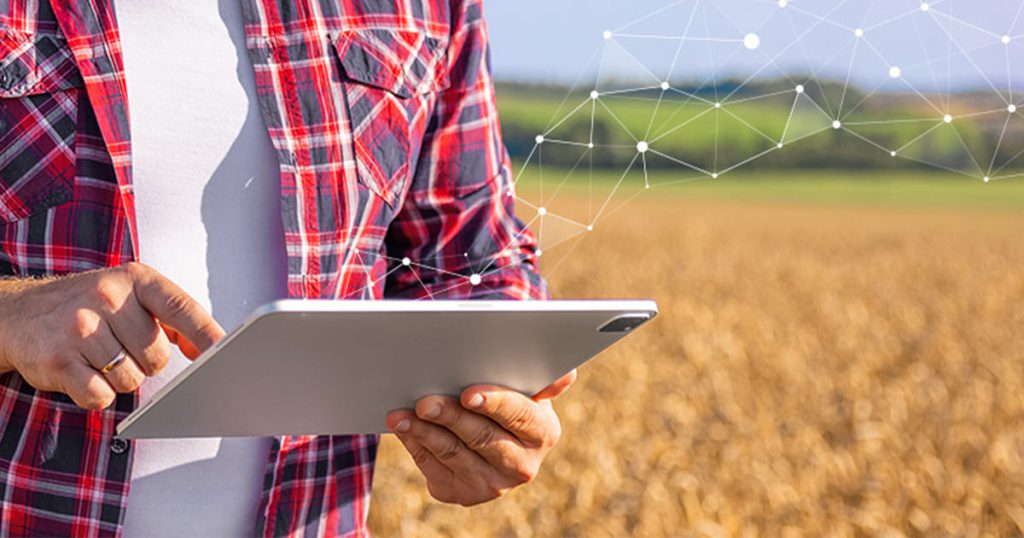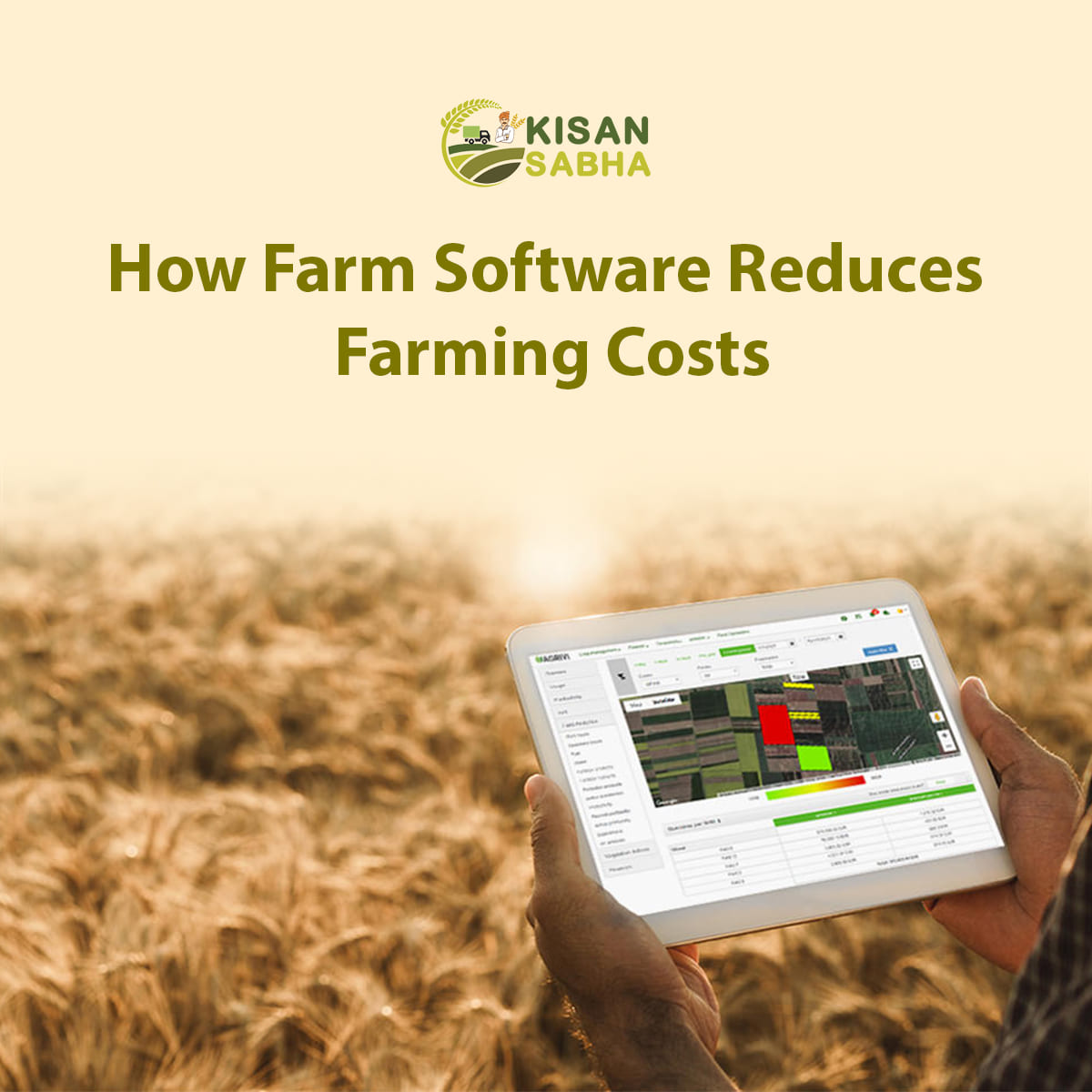As someone who has spent a lot of time working with farmers, I understand how agriculture is changing as a result of modern farm applications. These technologies enable real-time inventory management, precision farming, reduced manual labour, and comprehensive reporting. This allows farmers to save money on inputs while also increasing productivity and meeting industry regulations.
The use of farm software in many, if not all, farming practices has reduced operational costs and time while increasing farm output and promoting environmental conservation. In today’s world, the introduction of advanced technologies is the most beneficial because it helps farmers achieve the majority of their business’s goals and objectives.
Features of Farm Software Reduces Farming Costs
Smart Farming Saves Money
Today’s farm software helps farmers work smarter, not harder. Therefore, here’s what I’ve seen in the field:
- GPS guides tractors with pinpoint accuracy.
- Weather apps help plan the perfect planting time.
- Soil sensors tell exactly where to water.
- Additionally, mobile apps track every penny spent.
For instance, my friend Joe, a corn farmer in Iowa, cut his seed costs by 15% last year just by using planting software. “It tells me exactly where to plant and how much seed to use,” he told me.

Better Stock Management
Keeping track of supplies used to give farmers headaches. Now, it’s much easier:
- Apps show what’s in stock at a glance.
- Order reminders prevent running out.
- Furthermore, barcode scanning speeds up counting.
- Also, usage tracking spots waste.
Sarah, who runs a dairy farm, says she saves hours each week. “I used to count everything by hand. However, now my phone tells me when to order more feed.”
Making Smarter Choices
Farm software helps make better decisions. I’ve watched farmers:
- Check weather patterns before planting.
- Track market prices for the best selling time.
- Monitor crop health with drone pictures.
- Moreover, predicts harvest times accurately.
This information helps avoid costly mistakes. For example, one farmer told me he saved $10,000 by changing his planting date based on weather data.
Read More:- 10 Types of Urban Agriculture in India
Taking Care of Equipment
Breaking down during harvest can cost a lot of money. In addition, new software helps by:
- Warning when machines need service.
- Tracking repair costs.
- Scheduling maintenance.
- Finding parts quickly.
“My tractor app told me to check the oil before it became a problem,” says Tom, a wheat farmer. “It saved me from a breakdown right in the middle of harvest.”

Managing Workers Better
Labor costs eat up farm profits. Smart scheduling helps by:
- Matching workers to tasks.
- Tracking work hours.
- Showing who’s doing what.
- Planning for busy times.
One farm I work with cut overtime costs by 30% using worker scheduling software.
Following the Rules
Farming has lots of rules to follow. However, the software makes it easier by:
- Keeping track of permits.
- Recording chemical use.
- Storing safety records.
- Filing reports on time.
This saves both time and money on paperwork. Additionally, it helps avoid expensive fines.
Understanding Markets
Good timing can mean better prices. Modern software shows:
- Current market prices.
- Price trends.
- Storage costs.
- Best times to sell.
A soybean farmer I know made an extra $15,000 last year by watching market trends on his phone.
Real Results from Real Farms
Let me share some success stories I’ve seen:
- A 500-acre farm saved $45,000 on water and fertilizer.
- Dairy cut feed waste by 20%.
- An orchard reduced spraying costs by 35%.
- Furthermore, a vegetable farm lowered labor costs by 25%.
Getting Started
If you’re thinking about trying farm software, here’s what I suggest:
- Start small with one or two tools.
- Ask other farmers what works for them.
- Try free versions first.
- Get training when offered.
- Keep good records to track savings.
Tips for Success
From what I’ve seen, successful farms:
- Train all workers to use the software.
- Update their systems regularly.
- Back up their data.
- Keep learning new features.
- Finally, share tips with other farmers.
Looking Ahead
Innovative technological breakthroughs are altering the agrarian landscape in a manner that is certain to enhance agricultural practices. Presently, modern weather forecasting systems have enabled farmers to predict weather changes with a high percentage of accuracy, which facilitates planning and mitigates risks. Moreover, advanced monitoring systems help to monitor livestock and machinery in real-time, ensuring effective distribution of resources and maintenance of appropriate timetables.
Online record management systems have made it easy to carry out paperwork associated with mounted cubicle farms and enable easier monitoring of the performance efficiency of farmers. Additionally, the system enables all processes to be interlinked so that there is no disruption in communication from planting to harvesting. Furthermore, easy-to-navigate mobile apps give access to powerful tools directly to farmers, enabling them to take action anywhere within the farm. These developments are helping build agricultural systems that are more effective and kinder to the environment while offering higher returns on investments.
Conclusion
Farm software is changing how we farm. It cuts costs, saves time, and makes life easier. Whether you run a small family farm or a large operation, these tools can help you farm better and smarter. Start small, learn as you go, and watch your savings grow. That’s what I tell every farmer I meet. The future of farming is digital, and it’s helping farmers succeed in ways we never imagined before. Additionally, remember, that every penny saved through better management is a penny earned. In today’s tough farming world, that matters more than ever.





